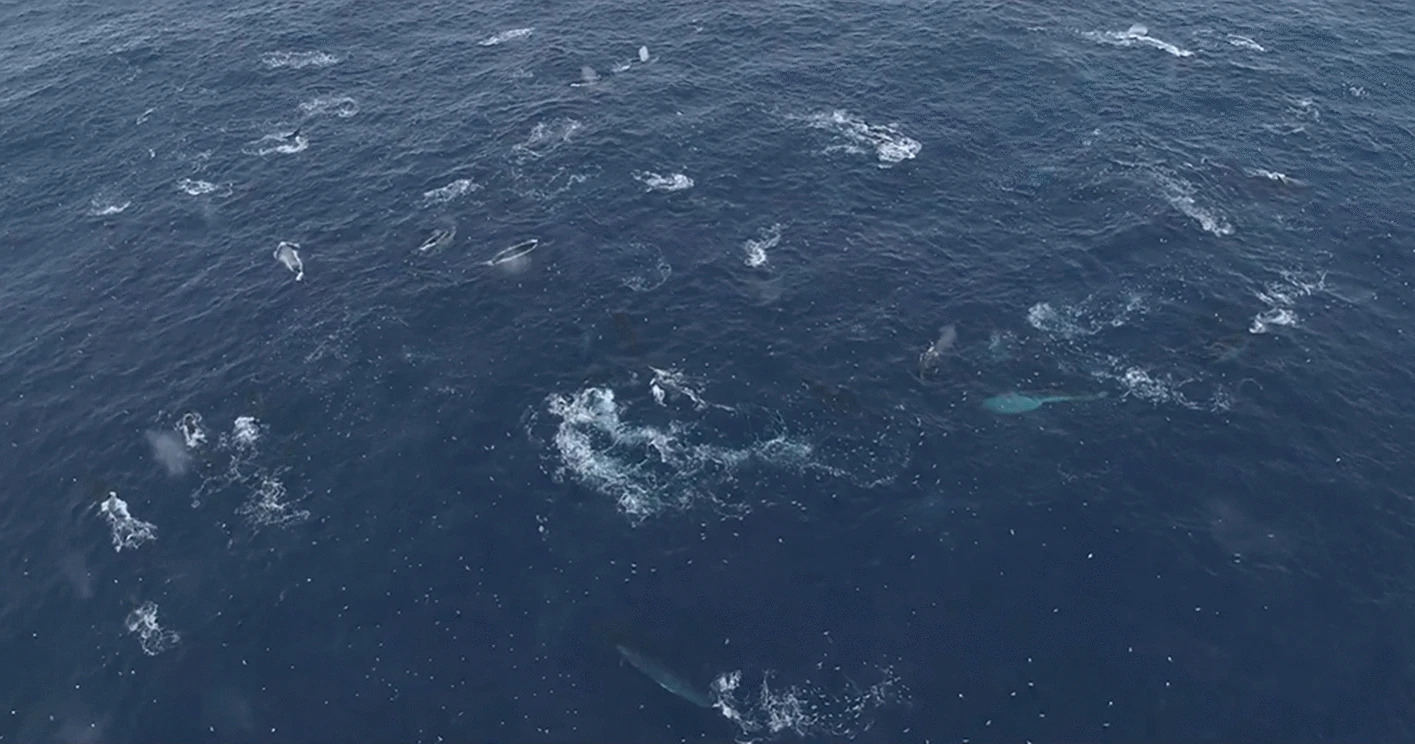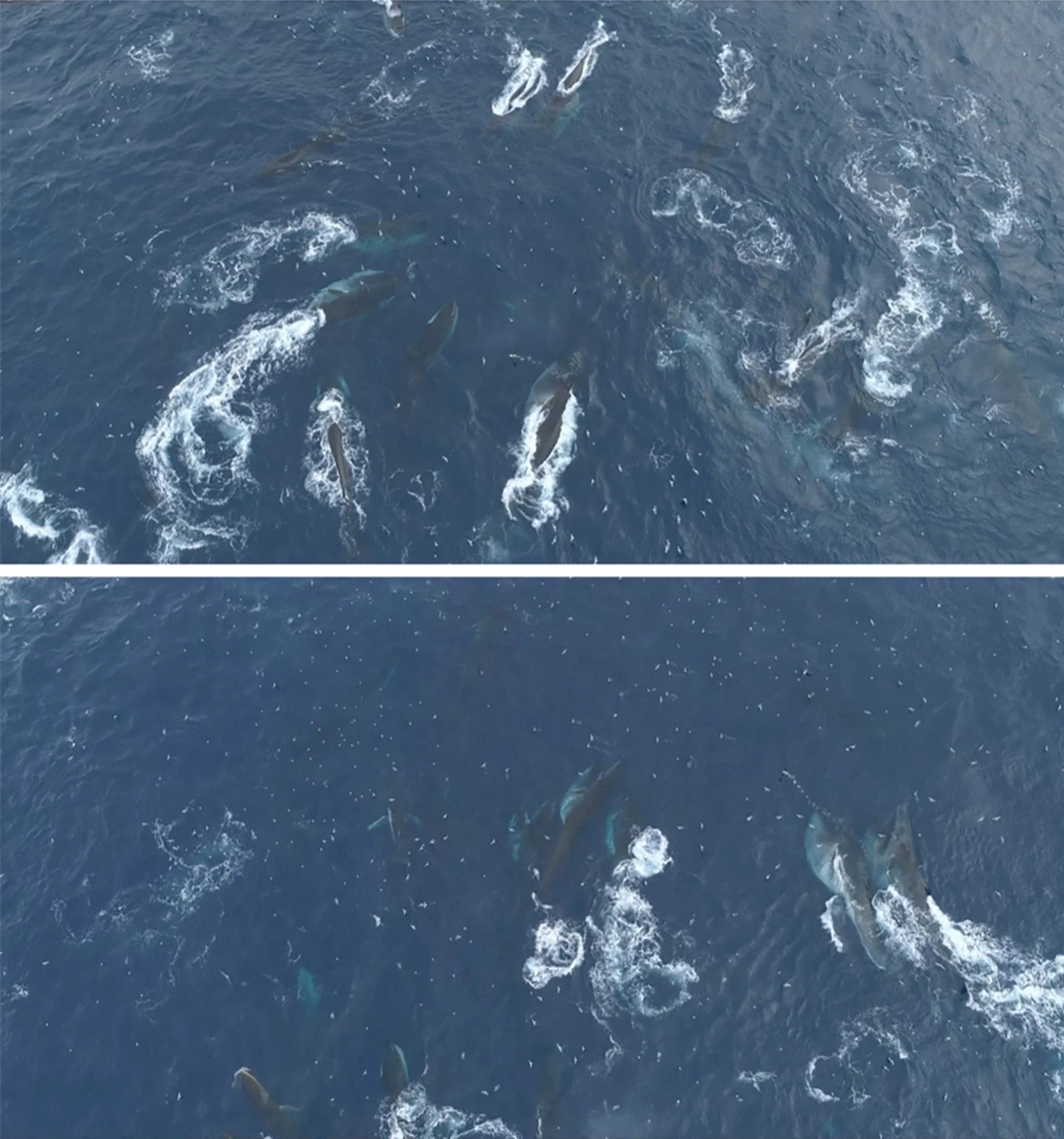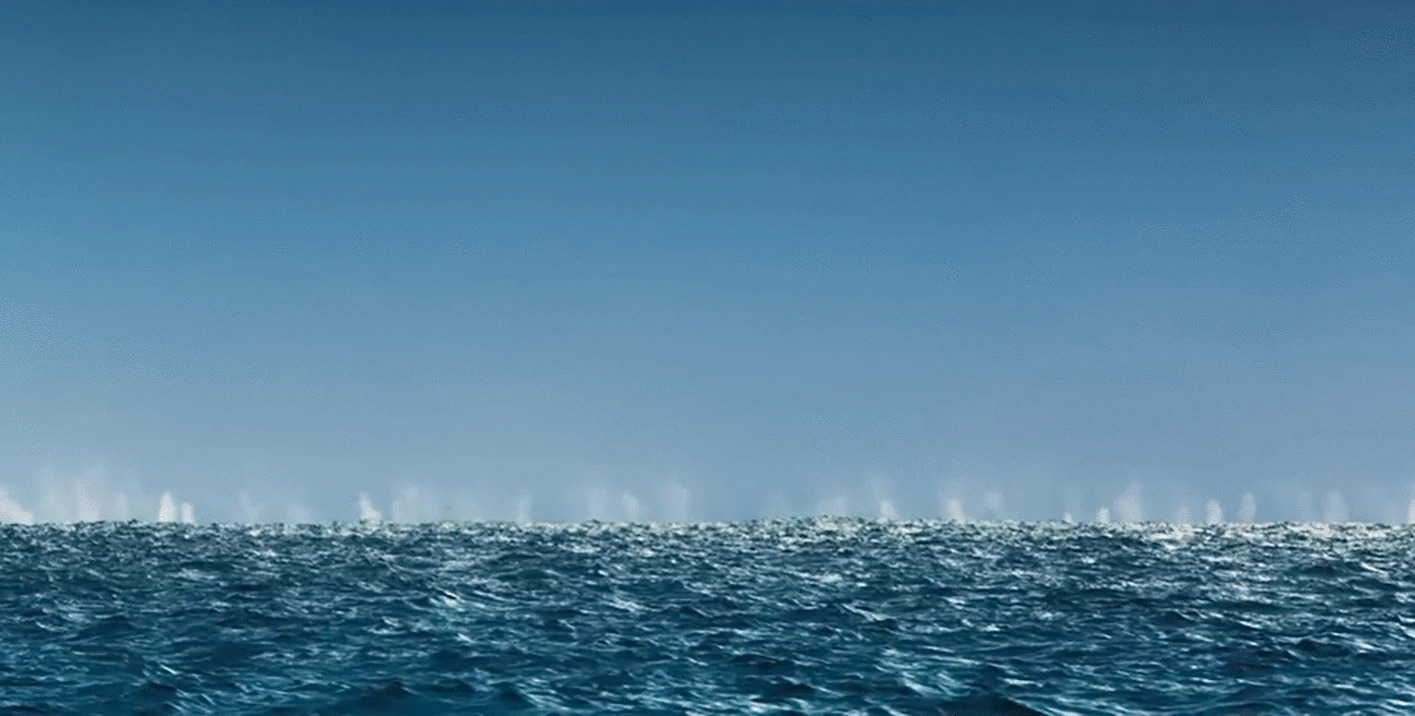
- Inspiring People -
- 3mins -
- 262 views
Fin whale numbers bounce back in Antarctic feeding grounds
Researchers report the return of large fin whale feeding aggregations to historical whaling grounds in the Southern Ocean, interpreting the high densities and re-establishment of historical behaviours as signs of a recovering population.
Return of large fin whale feeding aggregations to historical whaling grounds in the Southern Ocean
A Scientific Reports paper presents documentation of southern fin whales feeding in large numbers in ancestral feeding grounds in Antarctica for the first time since hunting was restricted in 1976.

Fin whale feeding aggregation. Aerial view on a section of the active feeding aggregation of ~ 70 fin whales encountered during ship transit on RV Polarstern expedition PS112 in 2018, filmed by drone. ©BBC Source: ©BBC/Nature.com
Fin whale populations rebound in historical Antarctic feeding grounds
Southern fin whales have been documented feeding in large numbers in ancestral feeding grounds in Antarctica for the first time since hunting was restricted in 1976. The paper, published in Scientific Reports, includes the first video documentation of large groups of fin whales feeding near Elephant Island, Antarctica.
The authors suggest that the recovery of fin whale populations could restore marine ecosystem nutrients and support the recovery of other marine organisms.
Southern fin whales (Balaenoptera physalus quoyi) are a subspecies of fin whale—the second largest whale species after the blue whale—that inhabits the Southern Hemisphere. They were extensively hunted during the nineteenth century, particularly around specific feeding grounds in Antarctica.
By the time fin whale hunting was banned in 1976, it is estimated that more than 700,000 individuals had been killed and they were rarely seen in their traditional feeding regions.
Helena Herr and colleagues collected data on fin whale abundance in the Antarctic using a helicopter survey and video recordings during two expeditions in April 2018 and March 2019. The authors estimated fin whale abundance based on all sightings of individuals and groups along 3,251 kilometer search tracks.
They recorded 100 groups of fin whale with group sizes ranging from one to four individuals, and eight unusually large groups of up to 150 whales which appeared to be actively feeding. Previous observed instances of fin whales feeding have involved a maximum of thirteen individuals. Read the open access report here, or download as a pdf here.
Source: Phys.org

Close-up sections of the active feeding aggregation of ~ 70 fin whales. This aggregation was encountered during ship transit on RV Polarstern expedition PS112 in 2018 and filmed by drone. Fin whales are side-lunge feeding together at the surface. In the bottom panel a single humpback whale feeding with the fin whales is visible. ©BBC Source: Nature.com
recovering fin whale populations could enrich Antarctic marine ecosystem
The authors modelled fin whale population densities in the Antarctic, and predict a population of 7,909 fin whales for the total survey area, with a density 0.09 individuals per kilometer squared—high compared to fin whale populations in other areas of the world such as southern California (around 0.003 whales per square kilometre).
The authors report a noticeable hotspot of fin whales around Elephant Island with a predicted abundance of 3,618 individuals, or 0.21 whales per kilometer squared.
The authors suggest that recovering fin whale populations could enrich the marine ecosystem of the Antarctic through nutrient recycling from whale feeding and excrement (known as the “whale pump”), and, in turn, support increasing growth of phytoplankton and greater krill populations.
Source: Phys.org

Fin whale feeding aggregation at a distance. The horizon is covered by blows of a feeding aggregation numbering approximately 150 fin whales. ©BBC Source: ©BBC/Nature.com
Tons more whale articles
If you can’t get enough of the wonder of whales, you only need to click here.
